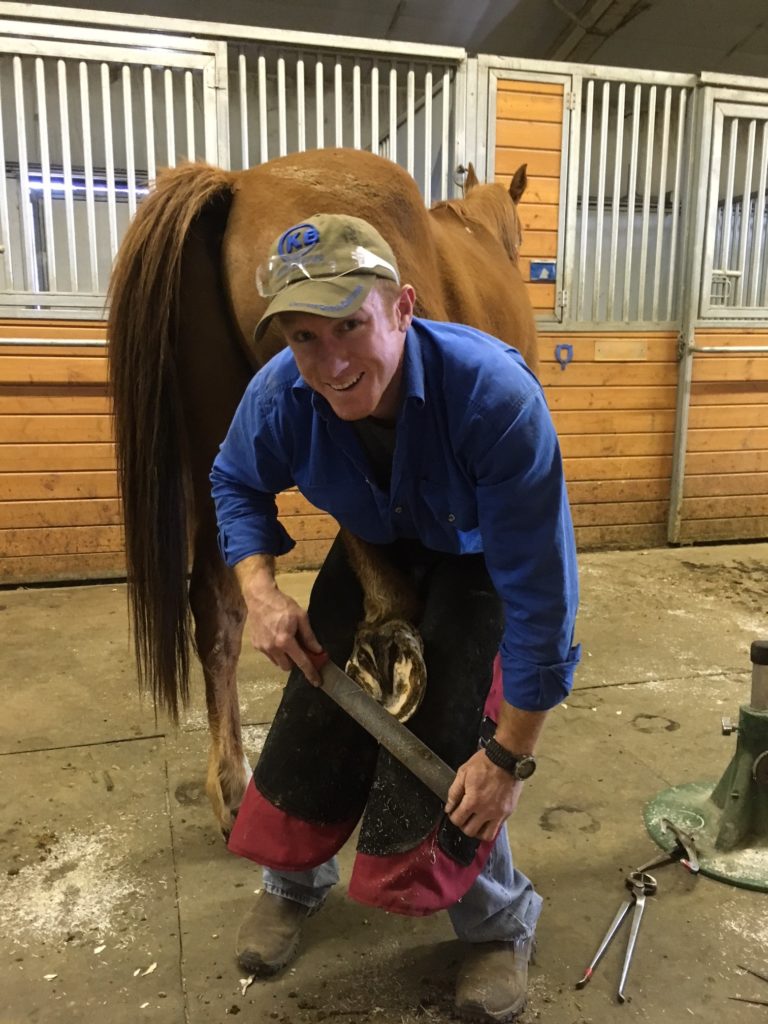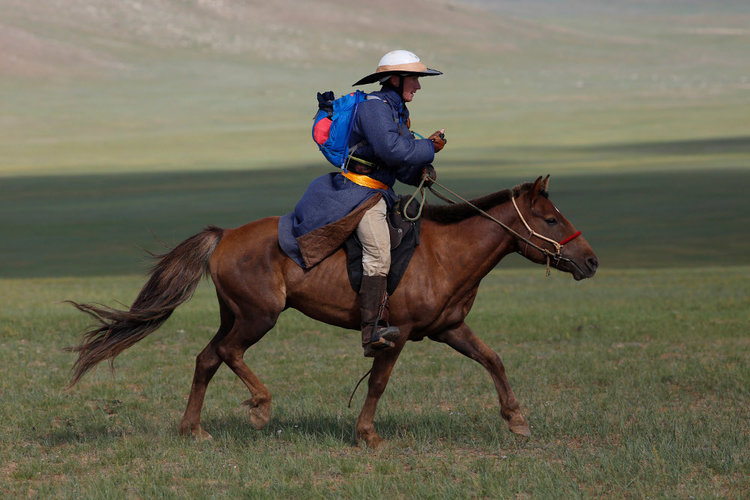Student Spotlight – Will Comiskey
 In our most recent class, we have enjoyed having Will Comiskey as a student. Will came to Butler Professional Farrier School all the way from Queensland, Australia. A friend of Will’s, Rob Brown from Northern Ireland, recommended that he attend Butler Professional Farrier School after Rob had completed the program in November 2017. Will decided to attend the first part of the 12-week program in the January class. Here, he has worked in cold (sometimes negative) temperatures, shoeing horses with borium and snowball pads. However, when Will returns home it will be summer in Australia. Commenting on the dramatic shift in the weather he will experience, Will jokes, “I don’t know how I’m going to get back to work, shoeing horses in 110 degree weather!”
In our most recent class, we have enjoyed having Will Comiskey as a student. Will came to Butler Professional Farrier School all the way from Queensland, Australia. A friend of Will’s, Rob Brown from Northern Ireland, recommended that he attend Butler Professional Farrier School after Rob had completed the program in November 2017. Will decided to attend the first part of the 12-week program in the January class. Here, he has worked in cold (sometimes negative) temperatures, shoeing horses with borium and snowball pads. However, when Will returns home it will be summer in Australia. Commenting on the dramatic shift in the weather he will experience, Will jokes, “I don’t know how I’m going to get back to work, shoeing horses in 110 degree weather!”
Before Will came to Butler Professional Farrier School he was working on a cattle station in Boggabilla near the New South Wales/Queensland border. He has extensive experience working with horses. He has dedicated a considerable amount of time to becoming an all-around horseman. It is his love of working with horses that motivated him to go to school to learn more about taking care of their feet. He intends to shoe his own horses while he goes back to work with his cattle, but says that as he learns more he would like to shoe horses for others to “help with the bills.”
Will has challenged himself in many ways to become a better horseman. In 2016, he competed in and won, the Mongolian Derby, a 1000 kilometer (621.37 mile) horse race. It is the longest race in the world. In 2017, he returned to Mongolia and placed fourth in the race, earning him the title of Best Finisher. He is the most successful derbyist to ride in the Mongolian derby; a first place and a fourth place; two finishes from two starts. Will says that while the title is nice, his proudest moments in the race came when he was able to ride a really nice horse that other riders could not get a handle on.
Horses in the Mongolian Derby are local mounts that are changed out every 40 kilometers (~25 miles). Some of the horses are green broke and can only be handled by true horsemen. In order to complete the race in 7 days, Will says that he kept up a pace of about 140 kilometers (~87 miles) per day. He camped along the route. According to the rules of the race, the derbyists may only ride from 7:00 in the morning to 8:30 in the evening and horses must pass vet check exams to prove that the rider is taking care of his or her mount.
To prepare for the race, Will rode his horses at home every day about 50 to 80 kilometers (~30 to 50 miles). He also ran on foot about 10 kilometers (6.2 miles) every day to get into shape. In addition to the riding, he needed to be in shape to get places on foot if necessary. During the race, Will recalls, “Another rider’s horse got away from him and he had to run 15 kilometers (9.3 miles) back to the nearest station to get another horse to go round up his horse. That probably cost him winning the race.” Along with the physical shape, mental toughness is important to compete in the race. Blistering hot days as well as freezing rains caused for some discomfort. Many riders could not finish the race due to injury or fatigue.

Will Comiskey raced in the Mongol Derby – the longest race in the world (1000 kilometers). He won the race in 2016 and placed fourth in 2017 making him the most successful derbyist to ever ride in the race; a first place and a fourth place; two finishes from two starts. Picture by: (C) Julian Herbert (theadventurists.com)
In the future, Will plans to challenge himself again by competing in The Man From Snowy River Bush Challenge in Corryong, Australia. It is a competition that tests all-around horsemanship. Some of the challenge events include: a stock handling course, a cross-country obstacle course with 20 jumps, a whip cracking contest where riders must cut targets with a bullwhip at a gallop, a packhorse competition, a bucking horse challenge where the rider must ride a bucking horse for 8 seconds with the same saddle they used for the other competitions, a colt handling competition where a contestant must get a handle on a brumby that’s never been handled before in 3 minutes, and a horseshoeing course where a contestant must trim and shoe a front and hind foot in 30 minutes.
Will has been a pleasure to have at Butler Professional Farrier School. He has pushed himself to learn farriery with the same intensity that he has pushed himself to become a better horseman in other ways. He has put in the time to learn the anatomy of the horse, balancing the feet through trimming and proper shaping and application of horseshoes when the situation calls for it. He has demonstrated a thirst for knowledge by studying and asking questions to better understand the horse. We have enjoyed having him in the class and we wish him the best of luck in the future.
Related Posts
-
Horses require a great deal of care. Not only should they ha...Jun 21, 2018 / 0 comments
-
Happy Independence Day! This is a wonderful time of year to ...Jul 03, 2019 / 0 comments
-
Driving horseshoe nails accurately, consistently and safely ...Sep 28, 2010 / 0 comments
Blog Categories
- Anatomy
- Best Business Practices
- Conformation
- Current Events
- Customer Service
- Draft Horse Shoeing
- Equine Soundness
- Essential Anatomy Kit
- Farrier Careers
- Farrier training
- Foal soundness
- Horse Care
- Horse Foot Care
- Horse Owner Tips
- Horsemanship
- Horseshoeing
- Horseshoeing History
- Iron and Forge Work
- Student Spotlight
- Uncategorized
- Veterinary Care
Blog Archives
Contact Us
Butler Professional Horseshoeing School
495 Table Road
Crawford, NE 69339
(800) 728-3826
jacob@dougbutler.com
Subscribe to Our Blog
Get Our Free e-Book!
If you think you want to become a farrier (or know someone who does), this book can help you make that decision. Horse owners will learn the importance of choosing a qualified farrier and how to select the “right” one.
[ Get the e-Book Now! ]
- Follow:
